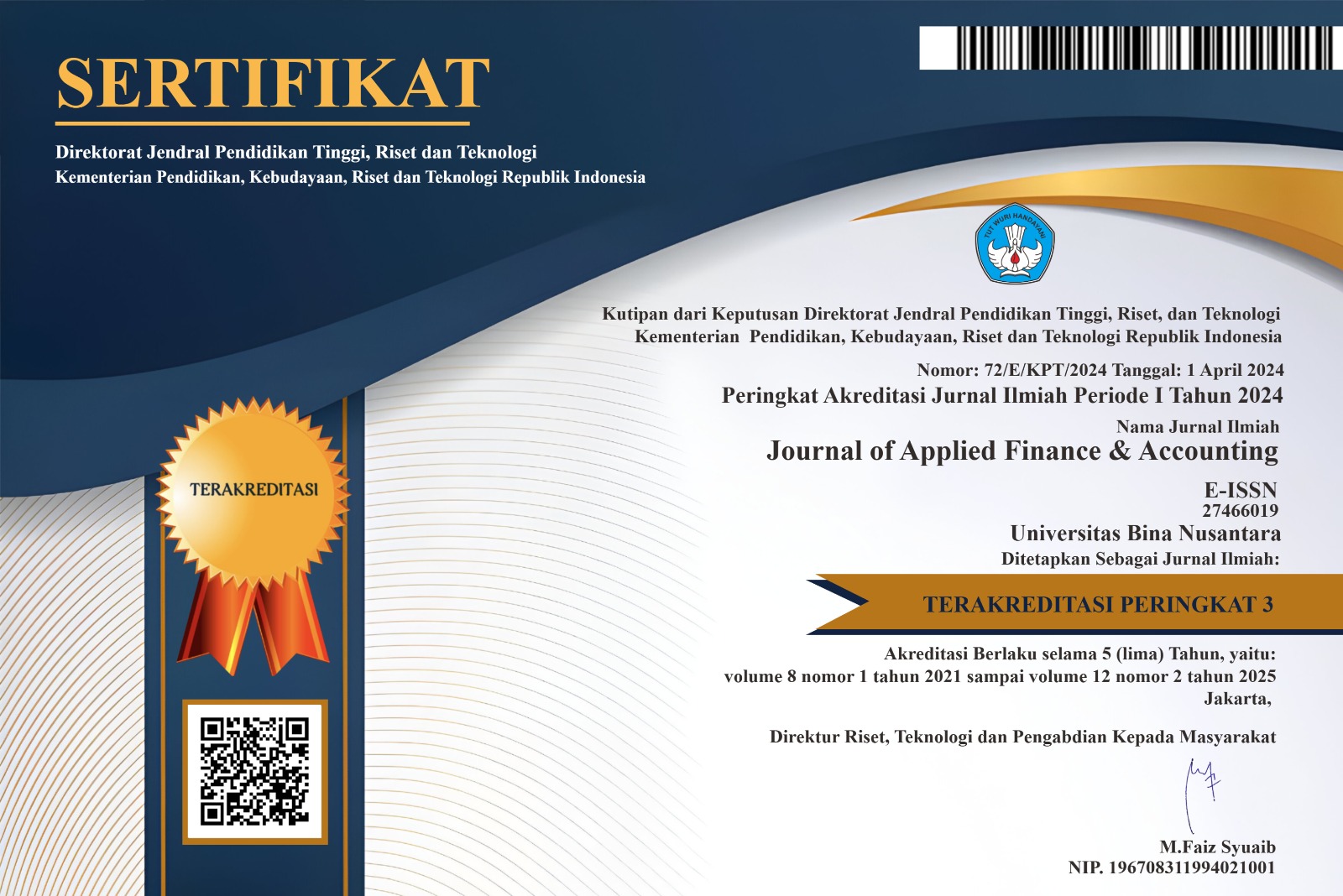DO INDONESIAN MANAGERS TIME THEIR CORPORATE BONDS?
DOI:
https://doi.org/10.21512/jafa.v5i2.793Keywords:
corporate bond, bond market timing.Abstract
Corporate bonds are becoming popular in Indonesian capital market due to the ongoing decline in interest rates and the increase in credit rating. Debt Market Timing Theory argues that managers try to time their bonds issuance according to the market interest rate, relatively. This paper aims to analyze the debt issuance timing profile of Indonesian public listed companies. The samples are 24 bonds issuances, which have maturity period between 3 to 7, and companies already issued more than 1 bond issued within year 2009 and 2011. The manager’s behavior to time government bond rates is observed in the 5 working days window, whether the corporate bonds being issued at the lowest market interest rate (i.e., government bond rates) on the window. Bootstrap method is utilized to construct counterfactual data. The research finds that 7 out of 24 bonds issuance were issued at the lowest government bond yield within the window. Indonesian public listed companies had no ability to time their bond issuances during period 2009 until 2011. This paper reveals that the frequency of bond issuances made by each Indonesian company does not necessarily determine their capability to time government bond rates. However, bootstrap is a useful and more robust tool to help assessing the debt market timing ability when the samples taken are small in numbers.
Downloads
Published
Issue
Section
License
Authors who publish with this journal agree to the following terms:
Authors retain copyright and grant the journal right of first publication with the work simultaneously licensed under a Creative Commons Attribution License that allows others to share the work with an acknowledgement of the work's authorship and initial publication in this journal.
Authors are able to enter into separate, additional contractual arrangements for the non-exclusive distribution of the journal's published version of the work (e.g., post it to an institutional repository or publish it in a book), with an acknowledgement of its initial publication in this journal.
Authors are permitted and encouraged to post their work online (e.g., in institutional repositories or on their website) prior to and during the submission process, as it can lead to productive exchanges, as well as earlier and greater citation of published work (See The Effect of Open Access).




